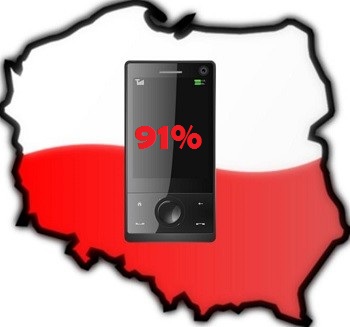A recent India based study has shown that interest in advertising over this channel is growing fast.
Even though marketers in India typically reserve 10 percent or less of their total advertising budget for mobile marketing, a new report has indicated that this trend is currently changing and that by the end of the year, that figure will have risen by 25 percent.
Marketing firms in India tend to spend less of their overall ad budgets on mobile than Asian Pacific counterparts.
Almost 75 percent of marketers in India currently reserve 10 percent or less of their overall ad budgets for mobile marketing. In Asia Pacific countries, only 66 percent have such a low percentage reserved for this channel. This, according to a report that has been issued by Warc and the Mobile Marketing Association. That said, the report did take care to underscore the fact that much of the industry is expecting to increase their amount of spending on smartphone ads by 25 percent.
The portion of the mobile marketing budget will also continue to rise by another 51 to 99 percent by 2020.
 There will also be overall advertising budget growth heading to India, this year. Therefore, even though there will still be companies that will be spending only 10 percent of their total budget on mobile ads, the amount of money actually being spent will be increasing. In fact, the total budgets in India are predicted to rise by an average of 46 percent, which is slightly higher than Asia Pacific company counterparts, where the prediction is a 43 percent increase.
There will also be overall advertising budget growth heading to India, this year. Therefore, even though there will still be companies that will be spending only 10 percent of their total budget on mobile ads, the amount of money actually being spent will be increasing. In fact, the total budgets in India are predicted to rise by an average of 46 percent, which is slightly higher than Asia Pacific company counterparts, where the prediction is a 43 percent increase.
To explain the growth in the amount of spending that will be dedicated to mobile advertising, the report indicated that the cost associated with smartphone ads has increased by 49 percent. Therefore, to maintain the same strategy, it is costing companies more. “While marketers appreciate the importance of the mobile channel in India, full potential of mobile advertising is still to be realized,” said the report.
Approximately 47 percent of the respondents to this survey stated that they felt that mobile marketing is an effective channel and that it provides brands with benefit.
Lucy |
September 28, 2015
This rate of device use in the population is currently sitting among highest levels in all of Europe.
According to a recent survey conducted by CBOS, a pollster firm, the penetration of mobile technology is higher in Poland than it is in most other countries, as 91 percent of the population has a cell phone of some form, which is used regularly.
That said, it should be noted that the penetration of smartphones, specifically, is not incredibly high.
The CBOS survey revealed that only 35 percent of Polish people have smartphones. Another 41 percent have classic or feature cell phones, and 15 percent are owners of both types of this mobile technology. The survey went on to examine the ownership of the various types of cell phone with greater depth in order to gain insight into who is keeping the traditional style of classic device and who is taking the step into the more recent tech by purchasing smartphones.
What was discovered was that the newer the mobile technology, the younger the owners of the devices.
 The research determined that the people whose mobile devices were smartphones were more likely to be among the younger age groups. Moreover, those with smartphones were also likely to be better educated than those who were owners of feature phones or classic devices.
The research determined that the people whose mobile devices were smartphones were more likely to be among the younger age groups. Moreover, those with smartphones were also likely to be better educated than those who were owners of feature phones or classic devices.
According to the report published by CBOS based on this mobile tech ownership survey in Poland, “Over three quarters of [polled] mobile phone users (78 percent) send and receive text messages via their phone. Among the less typical features of mobile phones, the most popular (57 percent) was the onboard camera.”
The survey provided some interesting insight into the ownership and usage of these mobile devices in Poland, as it is clear that the population is interested in this type of tech, but at the same time, the penetration rate of smartphones remains notably lower than it is in many other European countries.
It is likely that the next few years will be defining ones as there will likely be a shift in the type of mobile technology that is owned by various different demographics as has been the case in other similar markets around the world.
 There will also be overall advertising budget growth heading to India, this year. Therefore, even though there will still be companies that will be spending only 10 percent of their total budget on mobile ads, the amount of money actually being spent will be increasing. In fact, the total budgets in India are predicted to rise by an average of 46 percent, which is slightly higher than Asia Pacific company counterparts, where the prediction is a 43 percent increase.
There will also be overall advertising budget growth heading to India, this year. Therefore, even though there will still be companies that will be spending only 10 percent of their total budget on mobile ads, the amount of money actually being spent will be increasing. In fact, the total budgets in India are predicted to rise by an average of 46 percent, which is slightly higher than Asia Pacific company counterparts, where the prediction is a 43 percent increase.
 The research determined that the people whose mobile devices were smartphones were more likely to be among the younger age groups. Moreover, those with
The research determined that the people whose mobile devices were smartphones were more likely to be among the younger age groups. Moreover, those with 